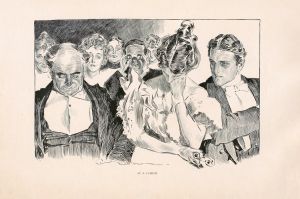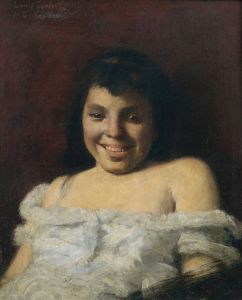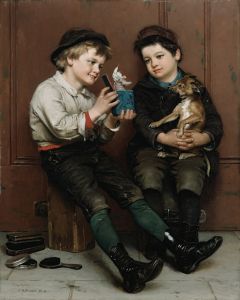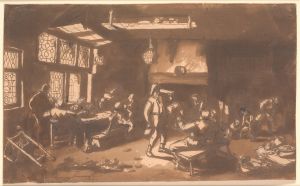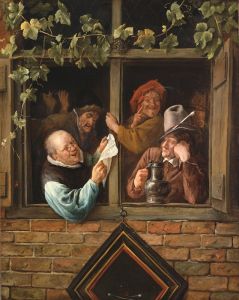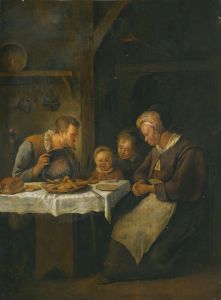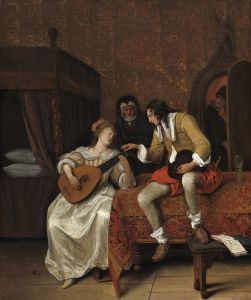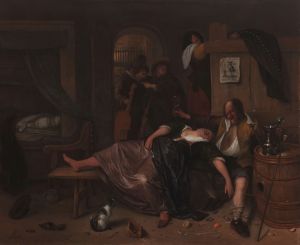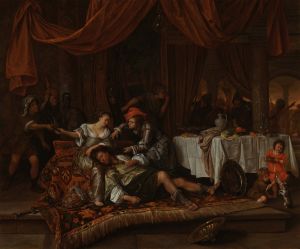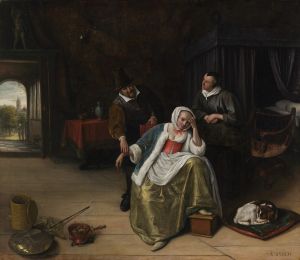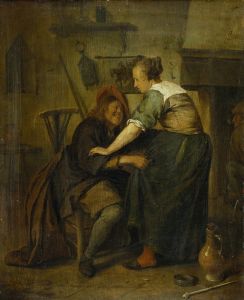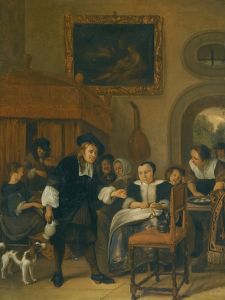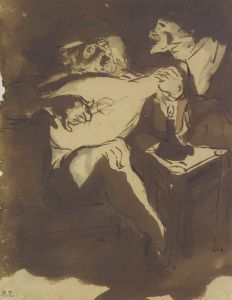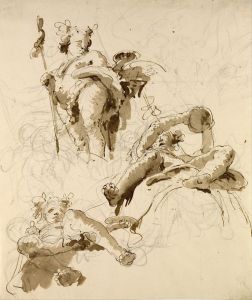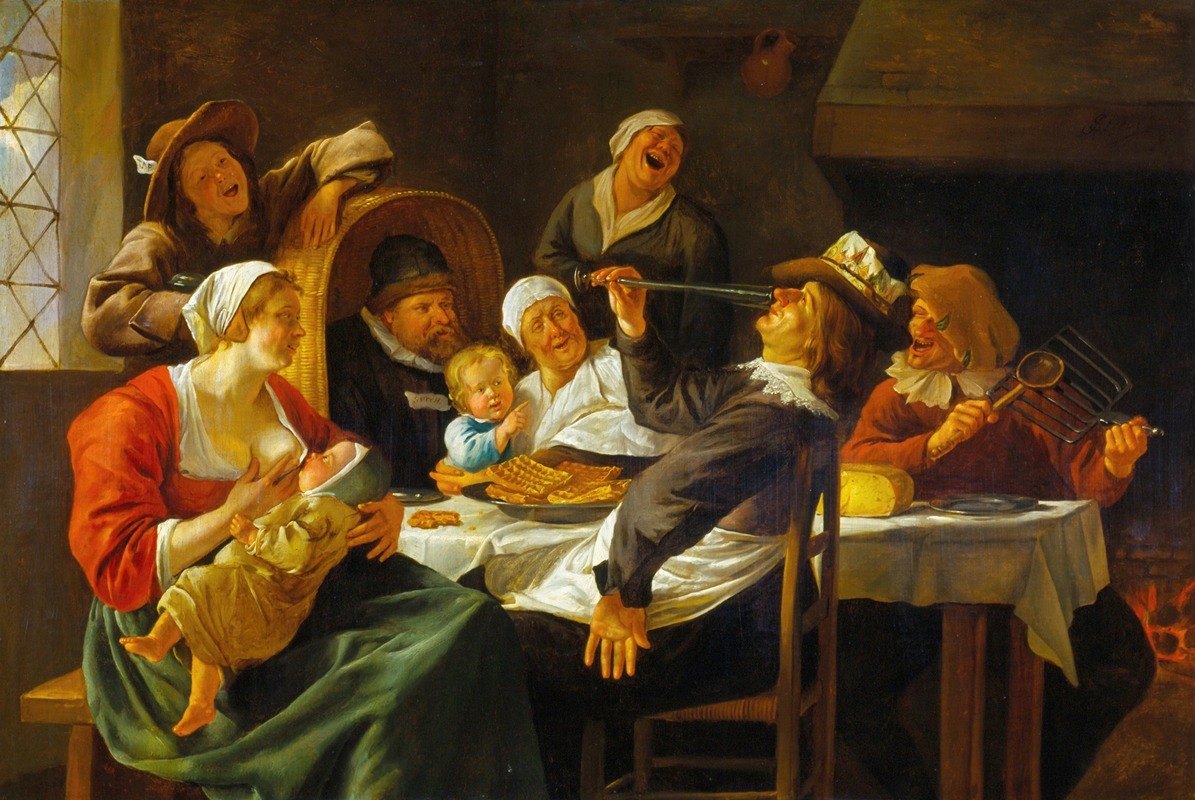
The Twelfth Night Feast
A hand-painted replica of Jan Steen’s masterpiece The Twelfth Night Feast, meticulously crafted by professional artists to capture the true essence of the original. Each piece is created with museum-quality canvas and rare mineral pigments, carefully painted by experienced artists with delicate brushstrokes and rich, layered colors to perfectly recreate the texture of the original artwork. Unlike machine-printed reproductions, this hand-painted version brings the painting to life, infused with the artist’s emotions and skill in every stroke. Whether for personal collection or home decoration, it instantly elevates the artistic atmosphere of any space.
Jan Steen's "The Twelfth Night Feast" is a notable painting by the Dutch Golden Age artist, renowned for his lively and often humorous depictions of 17th-century Dutch life. Jan Steen (1626–1679) was a prolific painter whose works are characterized by their vibrant storytelling and intricate details, often infused with moral lessons or satirical commentary.
"The Twelfth Night Feast" captures the festive spirit of the Epiphany celebration, a Christian holiday marking the visit of the Magi to the Christ Child, traditionally celebrated on January 6th. In the Netherlands, this occasion was often marked by merrymaking and revelry, which Steen vividly brings to life in his painting.
The composition of "The Twelfth Night Feast" is bustling with activity, showcasing a large group of people gathered in a domestic setting. The scene is filled with a sense of chaos and joy, typical of Steen's work, reflecting the boisterous nature of the celebration. The painting includes various figures engaged in different activities, such as singing, dancing, and playing musical instruments, all contributing to the lively atmosphere.
Central to the painting is the figure of the "King of the Bean," a traditional role assigned during the Twelfth Night festivities. This character is typically chosen by finding a bean hidden in a cake, and the person who discovers it becomes the "king" for the evening, often wearing a paper crown. Steen's depiction of this figure is both humorous and insightful, capturing the temporary reversal of social roles and the playful spirit of the occasion.
Steen's attention to detail is evident in the rich textures and vibrant colors of the painting. The artist skillfully uses light and shadow to create depth and highlight the various elements of the scene. The expressions and gestures of the figures are meticulously rendered, adding to the narrative quality of the work.
"The Twelfth Night Feast" is also notable for its inclusion of symbolic elements, a common feature in Steen's paintings. These symbols often serve as moral or cautionary tales, reflecting the artist's interest in the human condition and societal norms. For instance, the presence of musical instruments and the act of singing may allude to the transience of pleasure and the folly of indulgence.
Jan Steen's work is often compared to that of his contemporaries, such as Frans Hals and Pieter Bruegel the Elder, for its dynamic compositions and keen observation of human behavior. "The Twelfth Night Feast" exemplifies Steen's ability to blend humor with social commentary, making it a valuable piece for understanding the cultural and social dynamics of the Dutch Golden Age.
Today, "The Twelfth Night Feast" is appreciated not only for its artistic merit but also for its historical significance, offering insights into the customs and traditions of 17th-century Dutch society. Steen's work continues to be celebrated for its lively portrayal of everyday life, and "The Twelfth Night Feast" remains a testament to his skill as a storyteller and observer of human nature.





